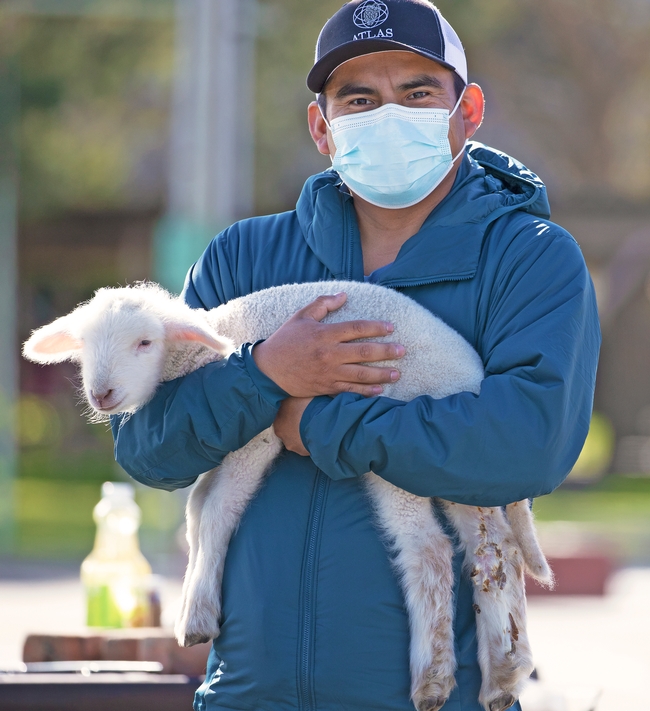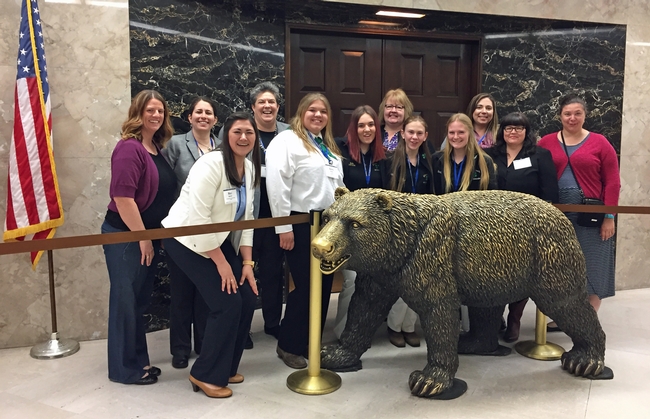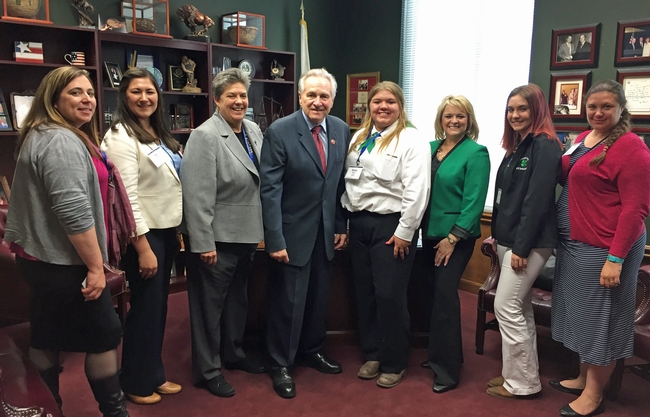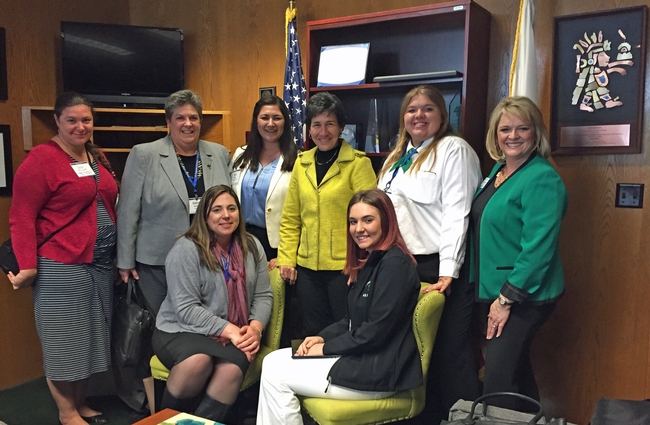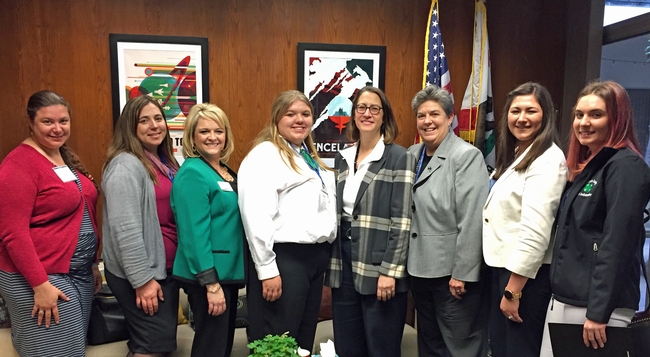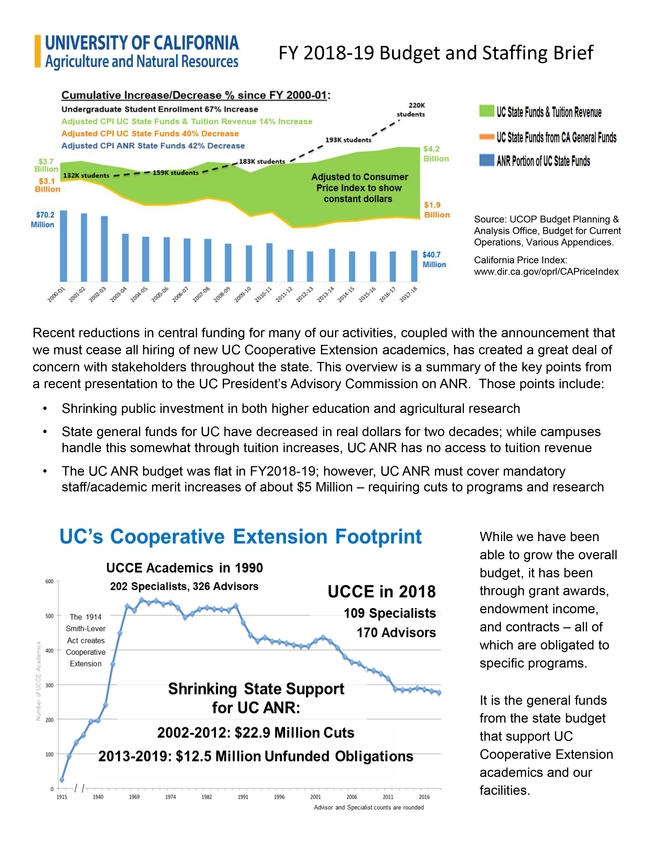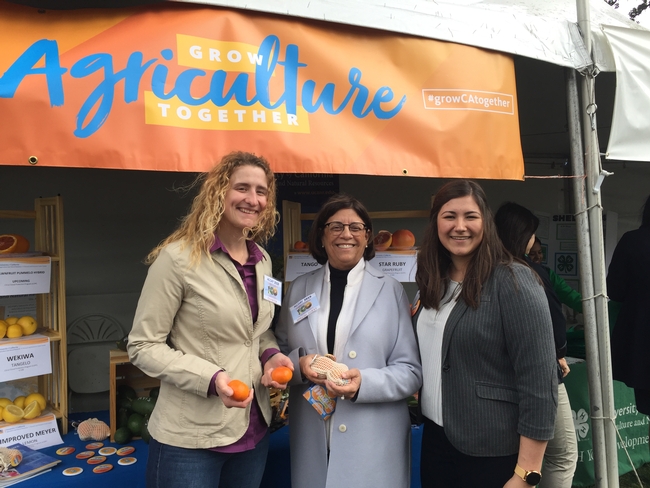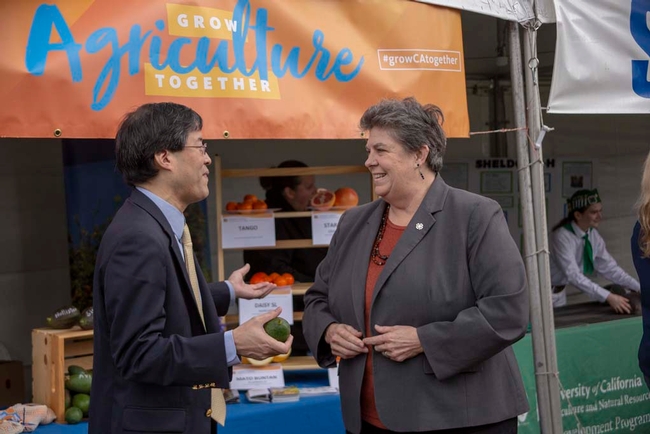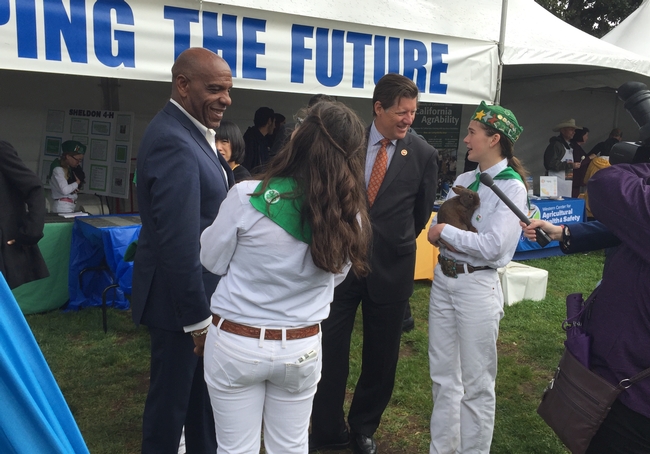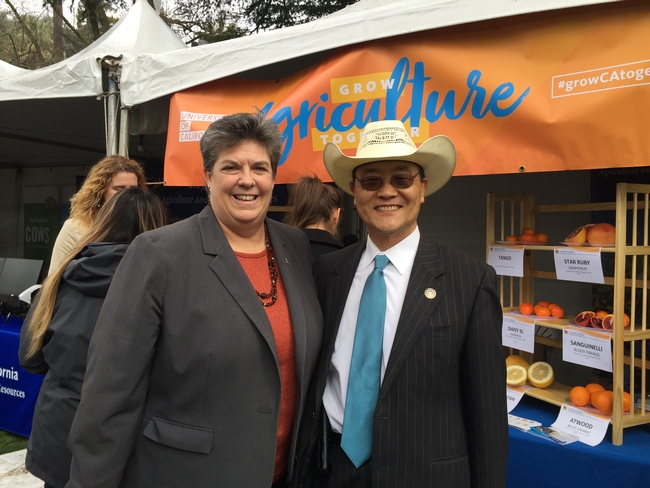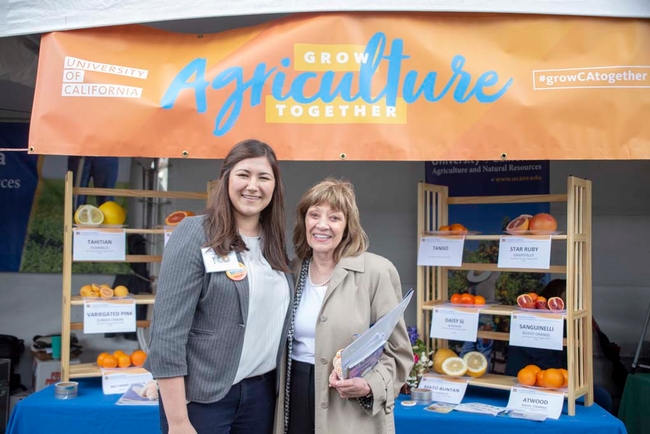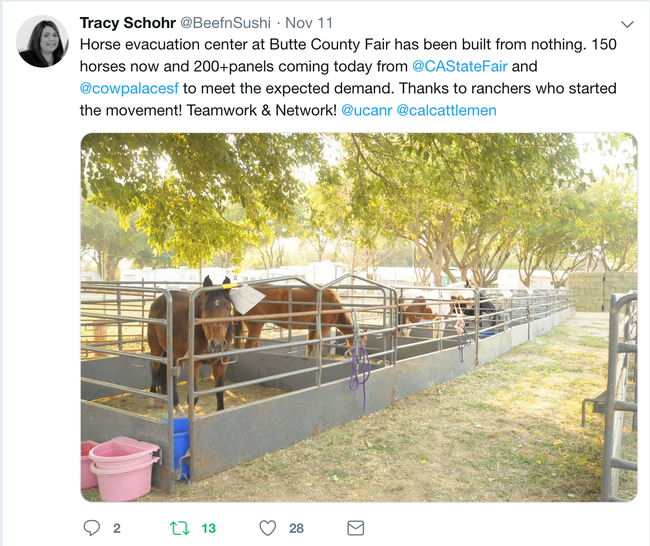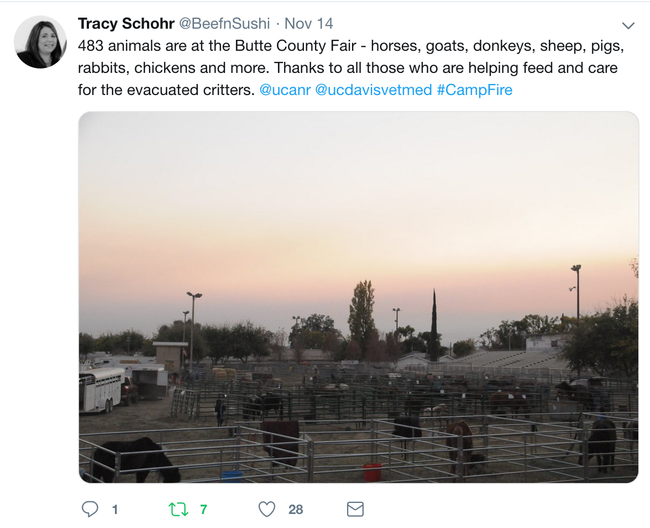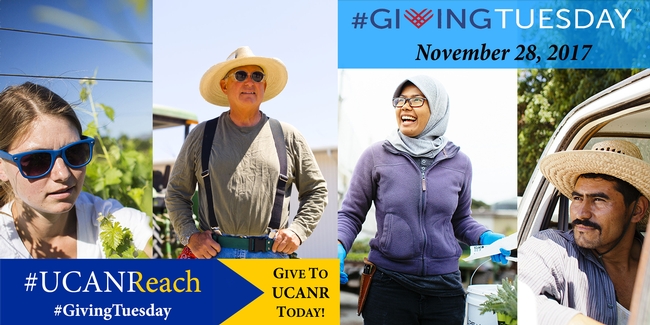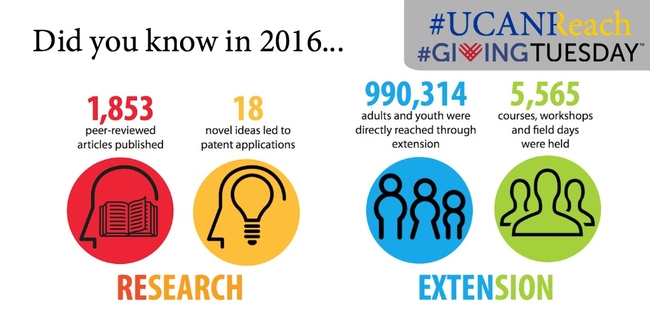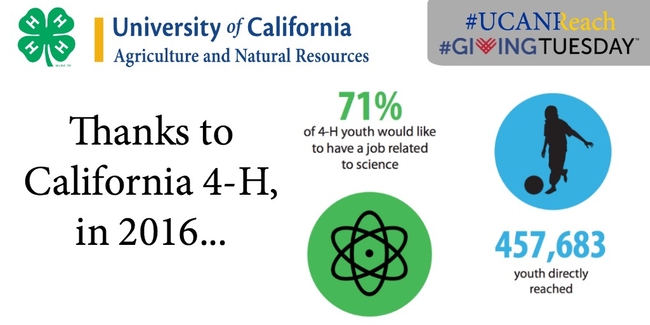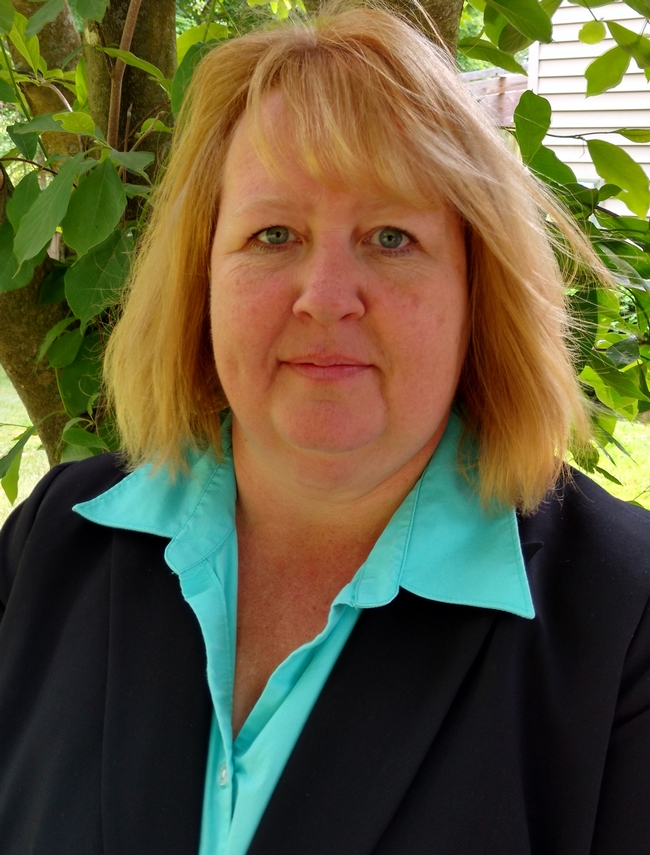Posts Tagged: Tracy Schohr
New Disaster Preparedness and Response Workgroup forms
Disasters are increasingly common in California, ranging from droughts, floods and wildfires to human health (e.g. COVID-19). Given the frequency of disasters in California, it is important that UC ANR is prepared to engage before, during, and after emergencies across the state.
The new UC ANR Workgroup on Disaster Preparedness and Response will create a forum to bring together colleagues across multiple disciplines to support our communities through trainings, grants, research and extension projects.
If you are interested in joining the workgroup, please contact co-chairs Sabrina Drill at sldrill@ucanr.edu or Tracy Schohr at tkschohr@ucanr.edu.
UC ANR visits the Capitol
UC ANR Day at the Capitol was held on March 26, 2019, to update California legislators and legislative staff on UC ANR's research and outreach projects. Vice President Glenda Humiston and a UC ANR delegation discussed a wide variety of topics during the legislative visits, including wildfire and forest health, water quality, youth development, nutrition and climate adaptation.
Every year, representatives from each UC campus gather in Sacramento for UC Day at the Capitol to educate lawmakers about the importance of research and higher education and their contributions to California's economy and progress. Although UC ANR participates in the annual Ag Day at the Capitol, this was the first UC ANR Day at the Capitol.
ANR's Global Food Initiative fellow Maci Mueller set up appointments with the policymakers and coordinated the UC ANR delegation to explain the value of investment in UC ANR research and outreach.
The UC ANR delegation consisted of two teams led by Humiston and Wendy Powers, associate vice president. The teams included Faith Kearns, California Institute for Water Resources academic coordinator; Ruth Dahlquist-Willard, UC Cooperative Extension small farms advisor for Fresno and Tulare counties; Tracy Schohr, UC Cooperative Extension livestock and natural resource advisor for Plumas, Sierra and Butte counties; Alena Pacheco, 4-H community education specialist in Fresno County; Bailey Butler, Oroville 4-H member; and El Dorado County 4-H Ambassadors Emily Ferrell, Josie Rothman and Isabella Veffredo, who were accompanied by El Dorado County 4-H program representatives Vera Bullard and Denise Veffredo.
“As a team, we were able to connect with every member or staffer that we met,” Powers wrote in her ANR Adventures blog. “Sometimes it was around the 4-H program, and what the program has done for our impressive team members, sometimes it was around fire or water, and other staffers or members were particularly interested in moringa. Either way, the goal was to make a connection so that each visit left an impression.”
“UC ANR Day was a terrific opportunity for 4-H members to practice their communication skills and get involved in advocacy at the state level,” Mueller said.
Oroville 4-H member Bailey described for legislators and their staff how she worked from Nov. 8 when the Camp Fire broke out until after Christmas with UC Cooperative Extension advisor Tracy Schohr and UC Davis School of Veterinary Medicine staff to care for 1,200 evacuated livestock and to train others to assist. Emily, a 4-H Ambassador in El Dorado County, said her 4-H experience with STEM activities and leadership training helped her get into the university of her choice – UC Santa Barbara.
The teams visited a total of 17 offices including state senators Cathleen Galgiani (Senate Agriculture Committee chair), Hannah-Beth Jackson, Brian Jones, Connie Leyva, Mike McGuire, Holly J. Mitchell, Jim Nielsen and Scott Wilk and assemblymembers Brian Dahle, Susan Talamantes Eggman (Assembly Agriculture Committee chair), Heath Flora, Laura Friedman, Monique Limon, Jose Medina, Jay Obernolte, Robert Rivas and Jim Wood.
Greeted warmly by each office, the teams shared examples of work being done by UC ANR in their districts, offered them assistance and thanked the legislators for their support. They left a copy of the UC ANR Snapshot, UC ANR map and overview, a 4-H fact sheet and UC at a Glance.
Legislators praised the 4-H members and UC ANR staff for the work they do for Californians.
“I look forward to making UC ANR Day at the Capitol an annual event,” Humiston said. “Telling people about the value of ANR's work is not only part of our mission, it is essential in educating others about all that we accomplish with the resources we have.”
A fact sheet showing the effects of shrinking public investment in the University of California and agricultural research can be downloaded at https://ucanr.edu/sites/Professional_Development/files/302896.pdf.
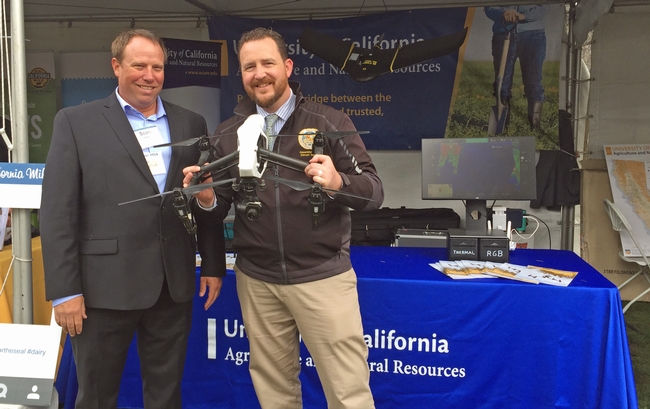
Sean Hogan, IGIS academic coordinator, talks drones with Assemblymember Devon Mathis.
Delivering hope in the midst of loss
Between the Camp Fire in Butte County and the Woolsey Fire in Southern California in November, most ANR members have been affected in some way by the devastating wildfires. Several have experienced major personal losses that they are still dealing with.
While the Camp Fire was still raging on Nov. 14, Emily Symmes, director of UCCE in Butte County, wrote:
“As you can imagine, due to the destruction of nearly the entire town of Paradise and other ridge communities, all of our employees have numerous friends, family, and loved ones who have lost their homes and all of their belongings, as evacuations were so sudden and urgent that most left with only what they could grab in minutes. As such, all have been affected to varying degrees. We have two direct staff members, Alexandra Falk (nutrition education specialist) and John Klepps (Honey Bee Tech Transfer Team) who lived in Paradise. Both have received confirmation that their homes were among those destroyed. They and their families and pets are now safe and have found temporary housing. Many in our extended network of 4-H and Master Gardener program participants and volunteers resided in Paradise have also been heavily impacted, losing everything.”
Among the Master Gardener volunteers in Paradise who lost their houses is Bob DiPietro and his wife, parents of Damon DiPetro of ANR's IT team. Damon's sister and her family also lost their house.
Colleagues have asked how to help.
Emergency resources for UC employees
In response to queries, the Staff Assembly has posted information on their website about the impact of the Camp Fire on our ANR employees and their families at http://staffassembly.ucanr.edu/Resources_/Emergency_Resources_/. Earlier in the year, they posted similar information for those impacted by the Mendocino fires and have committed to maintain Emergency Services information on their website whenever any UC ANR employees are impacted.
Emergency support is also available to UC employees from the university's benefit plans https://ucnet.universityofcalifornia.edu/news/2018/11/emergency-support-from-ucs-benefit-plans.html.
UC ANR assists Camp Fire survivors
In the midst of their own losses, UCCE staff in Butte County and neighboring counties have been reaching out to assist community members. For example, Ryan Cleland, 4-H representative, has been working with the 4-H community since Nov. 8, the day the Camp Fire erupted, to coordinate assistance and volunteerism. He is providing vetted and frequently updated information on where evacuated and displaced people can find help and how other community members can volunteer, donate and contribute.
The UCCE nutrition education team has been assisting with meal preparation at shelters, and also with volunteering at indoor youth activities available through the shelters and the local area recreation district.
Other UCCE staff and advisors have been volunteering where needed – helping gather and deliver supplies, volunteering at human shelters and animal shelters, helping out at the numerous meal centers that have popped up.
UC Master Gardener volunteers have been reaching out to fellow Master Gardeners who have lost their homes or remain evacuated to offer housing and other support.
Tracy Schohr, UCCE livestock and natural resource advisor in Plumas and Sierra counties, has been helping care for large animals in the evacuation zone.
The forestry, fire and natural resource advisors have ongoing fire safety research and education programs, coordinating with fire safe councils, and working with other agencies to assist in recovery and become better prepared for natural disasters.
ANR launches third annual Giving Tuesday Nov. 28
On Nov. 28, ANR will again participate in #GivingTuesday, a global day of giving, powered by our social networks. Celebrated on the Tuesday after Thanksgiving, #GivingTuesday kicks off the charitable season. For ANR, Giving Tuesday is an opportunity to raise funds for UC Cooperative Extension county programs, research and extension centers and statewide programs. As a result of the ongoing effects of the drought, recent wildfires and persistent pockets of poverty, California's needs in the coming year will be great, and year-end giving is an opportunity for donors to assist.
“UC Cooperative Extension professionals have a deep passion for their work and a dedication to the communities they serve. While most deliver their research and programs quietly every day, it is especially incredible to witness their response to disaster; for example, recent wildfires saw local UCCE offices responding immediately with vital information for coping with the fires, care for livestock and pets, as well as service in food banks and other volunteer needs,” said VP Glenda Humiston.
UC Cooperative Extension staff and 4-H members helped rescue livestock in Sonoma County as people evacuated. The UC Master Gardener Program connected volunteers throughout the state who wanted to provide relief to the 17 UC Master Gardener volunteers who lost their homes in Solano County.
“UC Master Gardener volunteers are true to their generous nature and have offered tremendous support to fellow volunteers who have lost homes in the fires. With compassionate hearts, they have offered lodging, supplies and words of support,” said Missy Gable, UC Master Gardener Program director. “In the future, we will look to replant what was lost and find healing in the care and establishment of new landscapes and wild spaces.”
“Giving Tuesday gives us an opportunity to talk about our research and outreach to enhance food systems and create thriving communities, as well as all the other positive things everyone in ANR is doing to make life better for Californians,” Humiston said.
For UC ANR stakeholders, Giving Tuesday presents an opportunity to support the many programs and services that strengthen California communities each day and more importantly, during times of crisis. Last year, over $64,000 was raised on Giving Tuesday to support UC ANR programs including the 4-H Youth Development Program and UC Master Gardener Program.
“Last year, the 4-H Foundation recorded a 430 percent increase in donations over the previous fiscal year, raising over $30,000 in one day from 37 counties!” said Mary Ciricillo, director of annual giving for UC ANR. This was due in large part to a match challenge from an anonymous donor.
“This year, I'm excited to share that we will have two match challenge funds. One supporting the California 4-H Foundation and one for all UC ANR.” said Ciricillo.
A website is being created with links to all of ANR's programs, Research and Extension Centers and UCCE offices: ucanr.edu/givingtuesday. It invites donors to designate programs or locations to which they wish to donate.
As of Nov. 1, the website will contain a toolkit for county offices and programs to participate. It will include:
- A customizable letter to send to stakeholders
- Templates for “unselfies.” Donors may take photos of themselves holding an unselfie sign and share on social media how they are giving.
- Sample tweets and social media posts
- Sample thank you note
The UC Master Gardener Giving Tuesday website is at http://mg.ucanr.edu/givingtuesday.
The 4-H Youth Development Program also has its own website at http://4h.ucanr.edu/GivingTuesday. Last year, 4-H programs in 17 California counties participated.
Although not as well-known as the shopping events Black Friday and Cyber Monday, #GivingTuesday appeals to people who are swept up in the spirit of giving at the end of the year.
This year Development Services has set a goal of collecting a total of $60,000 for 4-H and UC ANR from 300 or more donors on Giving Tuesday. Last year UC ANR and 4-H received 224 gifts.
“The #GivingTuesday campaign is a fun way for people in all ANR programs to supplement their funding with private donations,” said Andrea Ambrose, acting director, UC ANR Development Services.
Grateful for the feedback on condition changes
Thanks so much to all of the Program Team Leaders and members, the Statewide Program Directors and the Strategic Initiative Leaders for the hard work they completed to review and improve upon our divisionwide condition changes. The timeline was short; it's never long enough, the timing was poor; end of summer is not a good time to pull people together, and the work was a challenge; something new for UC ANR to do this at a division level, but they did a tremendous job and really stuck it out despite the challenges!
These groups have submitted their ideas for condition changes to be coded into Project Board. Katherine Webb-Martinez, Mark Bell and I have reviewed the recommendations and compared the proposed variations for the original 19 that were proposed by multiple groups as well as new condition changes that were recommended. The recommended changes were not drastically different from the original, but changes were proposed and adopted with the final list is now a bit longer, but still manageable. The next step is for a group of 12 self-identified Program Team Leaders, SI Leaders, Statewide Program and Institute Directors to work together and, using this new list plus the 2025 Strategic Vision, revise the Public Values Statements drafted back in May. I so appreciate those that have stepped up to continue this work process – not surprising given the commitment and leadership ingrained in so many across UC ANR!
I suspect this iterative process of drafting and revising is a bit frustrating for many but, as we use this information to convey the importance of your work to those who don't know us and we seek to find increased support for your work, it is important to put forth compelling Public Value Statements and be able to ‘bucket' our impacts so that the stories behind the condition changes are readily available to share with decision-makers, prospective funders, and each other. These benefits are above and beyond that which comes from aligning our work with the 2025 Strategic Vision in order to position ourselves to achieve the Vision and support our achievement with stories of how we have made a difference, even to those who don't know us. So THANK YOU to all for the commitment to the process and the enthusiasm you've demonstrated for continuing excellence in UC ANR!
Along the lines of “identify the performance objectives and then determine the design” that I have talked about previously, I've been thinking about the upcoming 2018 Position Call. Program Council has discussed the process a few times and soon we will need to have that nailed down. Below are what I believe to be the key attributes of the ideal process:
- Considers needs/gaps across the state and across program areas
- Engages clientele/stakeholders in the need identification process
- Seeks input from all UC ANR academics
- Builds recognition of needs across program areas through a collaborative process
- Results in decisions that reflect ‘hearing' academics, partners, stakeholders
- Makes it easy for Program Council to recognize high priority positions
What am I missing? Thanks in advance for your feedback!
[This article was originally published Oct. 24 in the ANR Adventures blog at //ucanr.edu/blogs/blogcore/postdetail.cfm?postnum=25473.]

